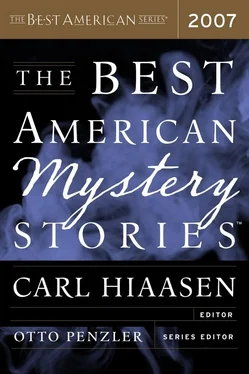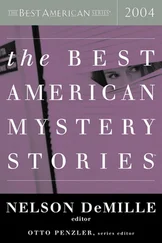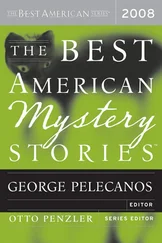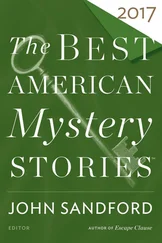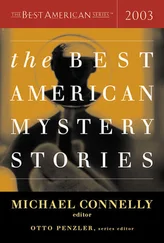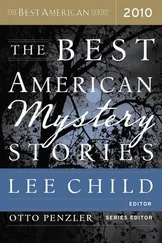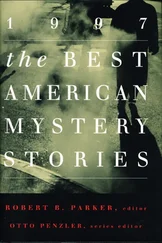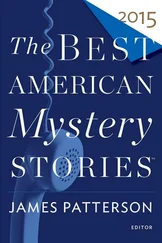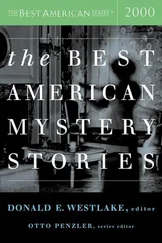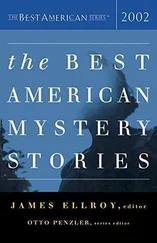The Best American Mystery Stories 2007
“Stab” by Chris Adrian. First published in Zoetrope: All-Story, Summer 2006. Copyright © 2006 by Chris Adrian. Reprinted by permission of the author.
“Solomon’s Alley” by Robert Andrews. First published in D. C. Noir, 2006. Copyright © 2006 by Robert Andrews. Reprinted by permission of the author.
“Going, Going, Gone” by Peter Blauner. First published in Hard Boiled Brooklyn, 2006. Copyright © 2006 by Peter Blauner. Reprinted by permission of the author.
“Keller’s Double Dribble” by Lawrence Block. First published in Murder at the Foul Line, 2006. Copyright © 2006 by Lawrence Block. Reprinted by permission of the author.
“T-Bird” by John Bond. First published in Miami Noir, 2006. Copyright © 2006 by John A. Bond, Inc. Reprinted by permission of John A. Bond for John A. Bond, Inc.
“A Season of Regret” by James Lee Burke. Reprinted with the permission of Simon & Schuster Adult Publishing Group from Jesus Out to Sea: Stories by James Lee Burke. Copyright © 2007 by James Lee Burke. Originally appeared in Shenandoah, 56/3
“The Timing of Unfelt Smiles” by John Dufresne. First published in Miami Noir, 2006. Copyright © 2006 by John Dufresne. Reprinted by permission of the author.
“Gleason” by Louise Erdrich. First published in The New Yorker, March 20, 2006. Copyright © 2006 by Louise Erdrich. Reprinted by permission of the Wylie Agency, Inc.
“Chellini’s Solution” by Jim Fusilli. First published in Mystery Writers of America Presents: Death Do Us Part: New Stories about Love, Lust, and Murder, 2006. Copyright © 2006 by Jim Fusilli. Reprinted by permission of the author.
“Where Will You Go When Your Skin Cannot Contain You?” by William Gay first appeared in Tin House magazine’s All Apologies issue, which came out in winter 2006. Copyright © 2006 by William Gay. Reprinted by permission of McCormick & Williams.
“Take The Man’s Pay” by Robert Knightly. First published in Manhattan Noir, 2006. Copyright © 2006 by 1013 Entertainment, LLC. Reprinted by permission of Akashic Books.
“One True Love” by Laura Lippman. First published in Mystery Writers of America Presents: Death Do Us Part: New Stories about Love, Lust, and Murder, 2006. Copyright © 2006 by Laura Lippman. Reprinted by permission of Little, Brown.
“The Spot” by David Means. First published in The New Yorker, August 21, 2006. Copyright © 2006 by David Means. Reprinted by permission of the Wylie Agency, Inc.
“Rodney Valen’s Second Life” by Kent Meyers. First published in The Georgia Review, Fall/Winter 2006. Copyright © 2006 by Kent Meyers. Reprinted by permission of the author.
“Meadowlands” by Joyce Carol Oates. First published in Murder at the Racetrack, 2006. Copyright © 2006 Ontario Review. Reprinted by permission of John Hawkins & Associates, Inc.
“Jakob Loomis” by Jason Ockert. First published in The Oxford American, Spring 2006, issue 53. Copyright © 2006 by Jason Ockert. Reprinted by permission of the author.
“Queeny” by Ridley Pearson. First published in Mystery Writers of America America Presents: Death Do Us Part: New Stories about Love, Lust, and Murder, 2006. Copyright © 2006 by Ridley Pearson. Reprinted by permission of Writers House, LLC.
“Lucy Had a List” by John Camp (pseudo. Sandford). First published in Murder in the Rough, 2006. Copyright © 2006 by John Camp. Reprinted by permission of International Creative Management, Inc.
“The True History” by Brent Spencer. First published in Prairie Schooner, Summer 2006, vol. 80, no. 2. Copyright © 2006 by the University of Nebraska Press. Reprinted by permission of the University of Nebraska Press.
“Pinwheel” by Scott Wolven. First published in Murder at the Racetrack, 2006. Copyright © 2006 by Scott Wolven. Reprinted by permission of the author.
A question frequently asked of me by mystery writers is where to submit their short stories. Ellery Queen’s Mystery Magazine, celebrating more than sixty-five years of continuous publication, with no plans to retire, is always the immediate first thought, followed by its sister publication, Alfred Hitchcock’s Mystery Magazine, which is nearly as geriatric. Unhappily, I have then used up my entire store of knowledge and advice. Fewer and fewer short fiction works appear in general magazines. Such women’s magazines as Redbook (which first published Dashiell Hammett’s The Thin Man, among much else), Good Housekeeping, and Ladies’ Home Journal proudly ran stories in every issue, as did such men’s magazines as Argosy, Esquire, Stag, Gentlemen’s Quarterly, and Playboy (and some men actually did read the stories, contrary to commonly held belief) Now, if they still exist, publication of fiction in magazines like these is as rare as a conservative defense lawyer.
There were other mystery magazines, too, in the 1950s, ’60s, and even into the ’70s: Manhunt (in which stories by Ross Macdonald, Mickey Spillane, and Ed McBain first appeared). The Saint Mystery Magazine, The Man from U.N.C.L.E., and eponymous digest-sized magazines by Rex Stout, Ed McBain, Mike Shayne, Edgar Wallace, and John Creasey (the latter two published in England).
A little earlier, there were such high-paying and prestigious general interest magazines as the Saturday Evening Post, Collier’s, Scribner’s, and Cosmopolitan (before it changed its target readership to primarily women). There were, too, the famous pulp magazines, filled almost exclusively with fiction, which had a life from around 1915 until the early 1950s. At one time, as many as 500 different titles were published per month. While television frequently is blamed for the demise of the pulps, indeed of most magazine fiction, it was mostly the creation and proliferation of mass market paperback books that killed their more cumbersome relations.
The New Yorker still publishes quality fiction, and several others still throw a small bone to fiction writers by offering a single story per month. Beyond that, I am at a loss as to what to say to writers who want or need to earn a living with short stories. Thank heaven for the literary journals that publish thousands of stories a year, hut they only provide nourishment for the soul, unable to pay more than a few dollars and a few copies of the magazine for a work on which a serious writer may have labored for a month or more. And this is princely compared with electronic magazines, which pay for work with a hearty “Thank you.” The last remaining option for a short story writer is one of the many anthologies published each year, though most of the contributors tend to he established authors who are commissioned to write for the book.
For mystery writers specifically, obstacles to getting published are more numerous than for those who work in a less genre-specific form. The New Yorker frowns on genre fiction. Playboy in recent years has eschewed it altogether, and many literary journals are reluctant to admit that they publish it at all, though they have been the source for some of the best crime fiction in the history of this series.
A high percentage of the stories in recent entries in The Best American Mystery Stories have been, not surprisingly, from literary journals and other anthologies, with a generous sprinkling most years from EQMM and AHMM. I hear the hopeful and happy rumor that Black Mask Magazine may he revived, which would provide a new market mainly for hard-boiled writers, but knowing what a difficult battle a pure fiction magazine would face, I’ll believe it when I see it.
Читать дальше
